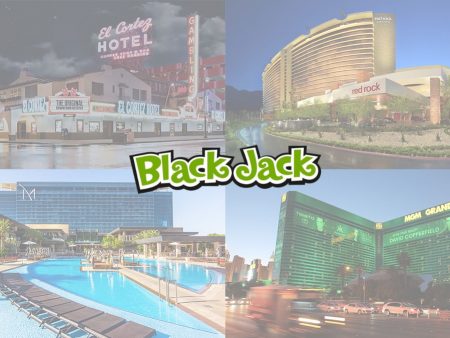Card counting is a rare type of gambling strategy that works. Many so-called gambling strategies rely on the gambler’s fallacy and ultimately fail.
However, counting cards gives you a mathematical advantage over the casino.
It’s a fact that the casinos are aware of.
They have instituted countermeasures in an effort to reduce the chances of losing the edge. Multidecks are one of these countermeasures. When you have eight decks, it’s more difficult to gain an edge.
You will need to convert the running number to a true count by using those extra decks. This article will explain how and why it is necessary to convert the running count into a true count.
First, let me explain the basics behind card counting.
Although the process seems simple, it requires discipline and practice to make any money. These concepts will be introduced using the Hi-Lo Count, which is the most popular card counting system. It is also the easiest to comprehend.
You’ve likely seen a reference to this system in any book on blackjack or counting cards. Harvey Dubner first introduced this system in 1963. It’s still as efficient today as it was fifty years ago.
Stanford Wong discusses the Hi-Lo System within his book “Professional Blackjack”. Don Schlesinger provides more information in “Blackjack Attack”. “Beat The Dealer” by Ed Thorp includes a card counting method that is almost identical to the Hi-Lo System.
It is essential that any counter can convert the running count into the true count. However, this skill is only required if they are playing in a game that has multiple decks.
How and why counting cards works
Many gambling systems allow you to raise or lower the amount of your bets depending on past outcomes. They don’t work for most people.
Here’s why.
Nearly all games have independent random trials. Based on the outcome of the previous trial, probabilities do not change.
You might roll two dice. Probabilities are determined by the number of sides that each die has.
After you have rolled the dice once, you can roll them again. The dice will still have the same number of sides.
The probability of an event is calculated by multiplying the possible outcomes of the event by the total number.
There are 36 outcomes possible when you roll dice. The probability of rolling a 2, on a pair, is 1/36.
If you roll a 2 and then roll again, the chance of rolling a 2 on your next roll is still 1/36. The outcome of the previous roll doesn’t affect it.
Blackjack is a game where the probability of a particular outcome changes as the cards are dealt.
Here’s an example.
– Blackjack is played from one deck. You have a 4/52 or 1/13 chance of getting an Ace.
– Two hands are dealt, each with an ace.
– The likelihood of getting an Ace on the Next Card has increased.
– One, there are now only 48 possible outcomes. That’s how many cards remain in the deck.
– The deck is also down to only two aces, meaning that the chances of getting an Ace drop to 2/48 or 1/24.
It’s important to know the difference between a shot at an Ace of 12 to 1 and an Ace of 23 to 1.
Why the Aces and Tens are Important
In the previous example, I used aces. But I could also have used 10s. A blackjack deck has 16 cards that are worth 10 points. Four of each 10s, jacks, and queens is the minimum. The probability of getting a 10 card is 16/52 or 4/13.
While the 10s are just as important as the Aces, you are more likely to get a 10.
Here are some reasons why this is important.
Blackjack wins are paid at even money almost all the time. You can only win if you have 21 cards in your hand.
This is called a “blackjack” or a natural, and it pays at 3 to 2.
The decks are shuffled randomly and the aces and 10s may be disproportional depending on their position in the deck. Your chances of getting a Blackjack decrease if you have dealt a lot more aces or 10s.
If you have a greater than usual number of aces or 10s, your chances of winning a blackjack increase.
You will have a mathematical advantage over the casino if you place more bets when you have a higher chance of receiving a payout of 3 to 2.
Counting cards can track this ratio.
The Hi-Lo Count for Beginners: How and Why
Hi-Low count, also known as the High-Low count, assigns a value to lower-valued cards and a value to higher-valued cards. The value of mid-sized cards is 0.
You adjust the count based on which cards you have seen being played.
– If you see a 2, 3, 4, 5, or 6 you will add 1 to your count.
– You subtract 1 from the count when you see a 10, an ace, or a 10.
– You can ignore the 7, 8, and 9 for counting purposes.
This will give you an indication of your advantage at any time until the dealer draws the cards.
Positive counts mean that you have more favorable cards in your deck.If the count is negative or 0, you will have a lower number of favorable cards.
When the count is positive, you can increase the size of your wagers.
When the count is negative or 0, you can bet your minimum.
It’s not difficult at all.
There are many guidelines on how much you can bet depending on the number of units, but I found it easiest to start with one unit — your minimum. Next, decide on your betting spread. Keep in mind that the larger the spread, the more aggressive and risky you will be.
You are more likely to get attention from the casino if you are more aggressive.
To determine the size of your wager, add the count to 1.
Here’s an example:
– Play at a table that has a $5 minimum bet.
– You decide to use $5 as your base unit and will have a spread of 1 to 4 units based on that count.
– Bets can be placed in denominations of $5, $10, $15, or $20 — one unit, two units, three units, or four units.
– If the count is less than 0, you can bet $5.
– If the count is +1, you will bet $10.
– If the count is +2, then you can bet $15.
– You’ll wager $20 if the count is greater than +3.
This is fine, as long as the game is being played with one deck.
However, if you are playing a game that involves multiple decks of cards in a single shoe, you must know how to convert the running count to the true count.
Converting the Running Count into a True Count:
It’s not as difficult as you might think to convert the running count into a true count. It is as simple as estimating the number of decks left in your shoe. To get the true count, divide the running count by how many decks are left.
People get too exact. You only need an estimate. Rounding off is your friend.
Have a look at this example:
You estimate there are still four decks in the shoe.
9 times 4 equals 36. However, you can round this off to 2 and base your decisions on a true count +2.
There are card counting systems that eliminate the need for conversion to a true count. However, I don’t believe they are necessary. You can keep up with the running count accurately and convert it to a true count if you are smart enough.
Another benefit of the true count conversion is that it reminds you to restart at 0 every time the dealer shuffles the cards. I once drank while counting cards and was talking with my wife.
I placed a bet according to the count even though the dealer was already moving.
You cannot afford to make mistakes when counting cards.
Unbalanced counting systems are those that do not require conversion into a true count. You’d end up with more than 0. If you count through one deck, they have different numbers of positive and negative values.
These counting systems will often allow you to start your count with a number that is not 0. This is done to account for the many decks in play.
These unbalanced systems require you to jump through so many hoops, it’s better to just do the true count conversion.
Here’s an example:
The Hi-Lo System gives you 24 cards that are worth +1 or -1 in a single deck.
This system allows you to count through a deck and get -2 instead of 0.
How important is the number of decks?
The number of decks was something I didn’t understand when I first discovered card counting. The ratio of aces to 10s is the same no matter how many decks you have, right?
Yes, this is true even before you deal any cards. You have 32 aces, 516 total cards, and eight decks. This is still 1 in 13.
However, the ratios of the cards change with each hand. With more cards, the ratios can be different.
Here’s an example:
The game is single-deck and you have all four aces.
The probability of getting an Ace is now 0.
Later on, you are playing an eight-deck game and four aces appear.
Because there are still 12 Aces in the deck, your probability of getting an Ace is not zero. Although the probability of getting an ace is not as high, it’s still higher than 0.
This is why it’s important to have enough decks.
When determining the ratio, you will need to divide larger numbers.
Change your basic strategy based on the true count:
You can also change the size of your wagers to gain an edge in blackjack. Skilled counters know when to stray from basic strategies.
There is a mathematically correct play for every situation in blackjack. This is the play that has the highest expected return. Some situations will result in a negative expected return, regardless of what choice you make. You want to get the lowest expected return in those cases.Insurance is the easiest and most basic deviation from basic strategy for the card counter. Insurance is a basic strategy that says you shouldn’t take it. It’s a foolish bet.
Insurance becomes a positive expectation wager when the real count is greater than 3.
This is because the dealer’s probability of getting a Blackjack increases as the ratio of high cards decreases. Insurance becomes a positive expectation wager when that probability is high enough.
You have to consider a strategy change when you have a dealer’s 10 and a hard 16. Because the dealer is likely to have a high total, hitting is the best strategy play. It’s still possible to bust, but it’s the right play.
If you are counting cards and there is a positive count, you should hit instead of standing. A slightly higher positive count means that you have a greater chance of getting busted with the extra card.
You can adjust your basic strategy if you have a dealer 10 and a hard 15. If you are following basic strategy, this is another hand you might hit.
If the count is greater than +4, you will be allowed to stand.
You know the basic strategy and that 10s are never split.
If the dealer shows a 5 and the true count is greater than +5, the best play is to split the 10s. Because you have such an excellent chance of getting an ace or 10 on your next card, it is worth your time to get two strong hands against the dealer.
The dealer is a bad player with the 5 showing.
The true count of a pair of 10s against a dealer 6 is identical, but it only needs to be +4 instead of +5.
If the dealer shows a 10, and you have a hard 10, you will not follow the basic strategy. Normally, in this situation, you would hit. However, if the true count is positive, you will double down.
If the count is greater than +2, you can deviate from your basic strategy. You would normally hit this hand. However, if it is positive, you will stand and hope that the dealer busts when she gets a 10.
It is the same thing to have 12 dealers against 2, but the true number must be greater than +3 before you can deviate from the basic strategy.
If you have an 11 against a dealer’s Ace, you will deviate from your basic strategy when the count exceeds +1. You would normally hit this hand. However, if the count is positive, then you will double down.
You would normally hit a 9 against a dealer 2 if you had a 9, but if your count is +1 or greater, you’ll double down.
These are the ten most crucial basic strategy deviations that depend on the true count. Search for phrases such as “Illustrious 18” or “Fab 4”. (The “Fab 4” refers to when you should surrender based on the count.)
Conclusion
Counting cards can be fun and give you an edge over the dealer.
However, if you are playing in a multi-deck game, you will need to be able to calculate the true count.
It’s simple to do.
Simply divide the running count by how many decks are left in the shoe.
Don’t forget that an estimate is all that you need. Round off.
How can beginners benefit from learning and understanding the true count in blackjack
Blackjack is one of the most popular casino games around the world, and one of a few games that offer the player an opportunity to beat the house. One of the successes in a blackjack game is getting the true count, which comes from keeping track of the ratio of high cards to low cards remaining in the deck.
To calculate the true count, first the player must know how many decks are in play in the game. After this, they must keep a running count of the cards that have been played. This is done by assigning a point value to each card—2-6 equals +1, while 10-A equals -1. All of the card values are then added up for each round. When a new round starts, the total for that round is added to starting count.
Next, the player must convert the running count into a true count. For example, if two decks are in play and the player’s running count is +6, the true count is +3. This is achieved by dividing the running count by the number of decks in play.
Once the true count is known, the player can then determine the strategy for the hand. Players can adjust their wagers based on the true count, as it helps indicate the likelihood of better odds in the player’s favor.
Knowing the true count is beneficial for professional players, as it increases the chance of winning more than they wager. But even beginners can benefit from mastering the technique; knowing the true count helps build a better understanding of the game and increases confidence in the strategies used.
To become an expert in blackjack and get the true count, a combination of practice, discipline, observation, and counting skills are required. Mastering the true count of blackjack is one of the most important techniques a player needs to succeed at the game and win more money.









